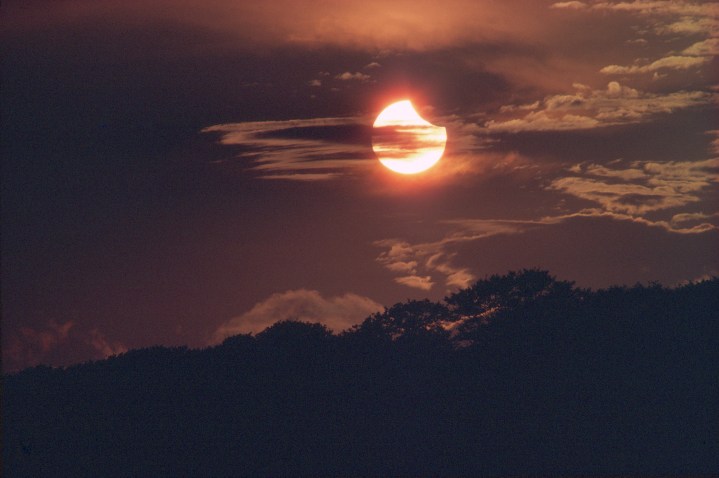This Tuesday, October 25, a partial solar eclipse will be visible in some parts of the world as the moon passes between the Earth and the sun. Around a quarter of the sun’s face will be obscured behind the shadow of the moon in what will be the final eclipse of 2022.

If you’re lucky enough to be in the right locations, you’ll be able to see the eclipse in person. If you’re located elsewhere, you’ll be able to watch the event online via livestream.
How to watch the eclipse in person
The partial solar eclipse will be visible across the UK and in other parts of Europe, as well as in parts of Africa and Asia. You can find a map showing the locations and times at which the eclipse will be visible here on timeanddate.com.
If you’re planning to view the eclipse in person, the Royal Astronomical Society has a full guide on how to watch the eclipse safely, and the most important thing to remember is to never look directly at the sun as this can damage your eyes. Instead, you can use tools like special eclipse glasses if you have them (these aren’t the same as sunglasses, so don’t use those!) or make your own viewing tools at home.
Two ways to observe the eclipse safely are to make a mirror projector, which you can use a small hand mirror or shaving mirror for, or to make a pinhole camera using cardboard, which will let you see a very small image of the eclipse as it happens. Check out the Royal Astronomical Society guide for more details on how to make and use these tools, which are quick and easy projects that are great to do with kids.
How to watch the eclipse online
If you’re located elsewhere in the world, or if you’d rather enjoy a guaranteed good view and safe watching experience, you can watch the eclipse online. The Royal Observatory Greenwich will be offering a livestream of the event, showing the view from the Annie Maunder Astrographic Telescope at the Royal Observatory along with commentary from astronomers and discussions about the science of the sun.
You can watch the livestream using the video embedded above or by heading to this YouTube page. Coverage will begin at 5:05 a.m. ET (2:05 a.m. PT) on Tuesday, October 25. If that’s too early for you, you can tune in any time until the eclipse ends at 6:51 a.m. ET (3:51 a.m. PT), or you can re-watch the stream later in the day as well.



